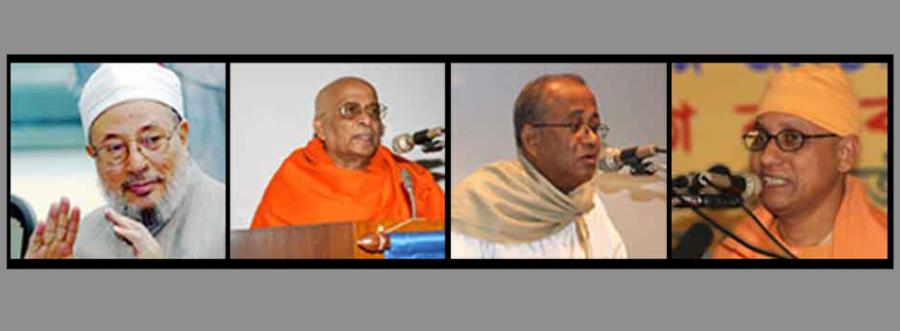
Meditation Throughout The Ages
published : 5 January 2016
Meditation is a universal process. It is the path of meditation that led the Buddha to enlightenment. His disciples still meditate to reach nirvana. In Jesus’s life prayer and meditation were inseparable. Prophet Mohammad (PBUH) spent years meditating in a cave in Mount Hera. The Holy Quran was sent upon him while he was in deep meditation.
Spiritual seekers from all ages and places have used this process for self realization. Hindu sages practiced yogic meditation to unite with the universal spirit. Muslim saints immersed themselves in morakaba-mosaheda to submit themselves to the Supreme Being. The terms tafakkur and tadabbur mentioned in the Quran urge us to meditate on the mystery of creation.
The age old Eastern practice of dhyana, morakaba or meditation is now gaining immense popularity in the West, where it is being used mostly for stress-relief and self-healing.
Dhyana, meditation, morakaba, tafakkur—no matter how different these words may sound, their essence is the same. Though it may have taken different forms in different cultural and religious settings, in essence meditation is as universal as water. It is for everyone.
In Hinduism
There is evidence of meditation practice in the Mohenjadaro civilization. Meditation is mentioned in the Veda, the Upanishad, the Mahabharata and the Bhagavad Gita. There is a whole chapter on dhana yoga in the Bhagavad Gita. Refering to meditation, the Upanishad states, “having become calm and concentrated, one perceives the self (atman) within oneself.”
The Buddha
Prince Shiddhartha attained enlightenment and became the Buddha by following the path of meditation. His meditation technique is now being used in various ways in the West for mental and physical healing.
In Judaism
Evidence throughout the Hebrew Bible shows that meditation was central to the prophets. The famous encounter of Moses with God happened after he had spent 40 days meditating in the Sinai mountains.
Jesus
Jesus immersed himself in meditation and prayer whenever he got the opportunity. He also encouraged his disciples to meditate.
In Islam
In Surah Al Imran (verses 190-191) in the Holy Quran, Allah states that, “Verily, in the creation of the heavens and the earth and in the alteration of night and day, are signs for men of understanding. Those who remember Allah, whether standing, sitting, or reclining, who reflect and contemplate on the creation of the heavens and the earth (and say in awe): ‘Our Lord! You have not created (all) this in vain.” The Arabic word used in the Quran is tafakkur, which literally mean contemplation or meditation. Thus, in Islam, contemplating or meditating is a sign of people of understanding.
The poet Hafez Sirazi
The Iranian poet Hafez Sirazi was one of the most famous poets from the sufi tradition.
Hazrat Mawlana Jalaluddin Rumi
Rumi's philosophy of universal love and surrendering to God has influenced reflective minds for centuries. As the Time magazine writes ‘‘The Sufi sect of the whirling dervishes dances to his rhyme. New age meditation echoes his songs.” In 2007, UNESCO celebrated Rumi’s 800th birth anniversary, declared that year the ‘Year of Rumi’ and introduced a commemorative medal in his honor.
Thakur Anukul Chandra
He said, “If Bengal awakens India will awaken. And if India awakens, the whole world will awaken.” Belief in one God and respect for all religions and philosophies were his core teachings. He called upon everyone to embark on a spiritual quest.
Hazrat Enayet Khan
The founder of Sufi Order International popularized Sufi meditation in Europe and America.
Dalai Lama
The Spiritual Leader of Tibet played an important role in introducing Buddhist meditation techniques among the intellectuals and scientists of the West.
Otish Dipankar Shrigyan
More than a thousand years ago, this emissary of enlightenment from Bengal traveled to India, Tibet and China carrying teachings about meditation, dedicating his life to removing the darkness and ignorance prevailing in society.
Baba Lokenath Brahmachari
His simple teachings of faith, love and devotion helped him secure a place in the hearts of thousands of ordinary Bengalis.
Sree Ramkrishna Paramhansa
Sree Ramkrishna Paramhansa initiated a large scale revival of spirituality during the British era and popularized meditation and spirituality among intellectuals and commoners alike.
Imam Ghazzali
10 years of solitary quest led him to the realization that self purification and meditation are the keys to salvation. He brought about a revival in Islamic thinking by combining meditation with the Shariah (Islamic Law). For the next thousand years mystics and philosophers from both the East and the West were deeply influenced by his work.
Swami Vivekananda
The chief disciple of Ramkrishna. His famous speech in the Chicago Parliament of World Religions in 1893 introduced Eastern spirituality to the West. He established Vedantic Society in America and Ramkrishna Mission in India to help spread spirituality.
Moharishi Mahesh Yogi
In the 60s he introduced Transcendental Meditation (TM), a meditation technique based on Vedic philosophy, in the West. TM had a significant role in popularizing meditation in the West and had significant presence in Western media.
New Age
Since the 1960s and 70s various secular meditation techniques have emerged in the West. These are primarily used for managing stress and promoting health. Amongst the popular techniques are Relaxation Response, developed by Dr. Herbert Benson; and Mindfulness, developed by Jon Kabat Zinn.


















